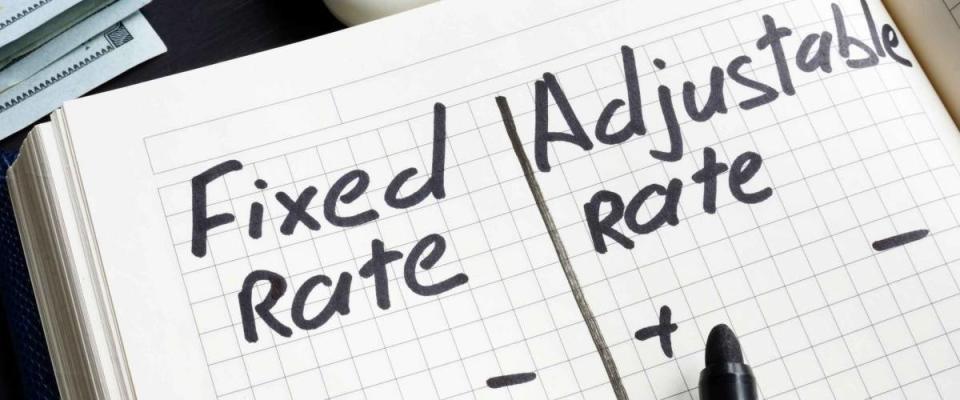Mortgage rates dip, opening the door to refinance savings a little wider

With forecasts looking for mortgage rates to rise before the end of the year, the opportunity for homeowners to save money by refinancing their home loans might soon be slipping away.
But borrowers have been given more time to act. After remaining virtually frozen for weeks by pandemic-triggered economic uncertainty, the rates on some of America’s most popular mortgage products have dropped once again, according to a closely followed survey.
That means another period of historically low mortgage rates. But how long it’ll last — a few days, a couple of weeks — is impossible to know.
30-year fixed mortgage rates

The average interest rate on a 30-year fixed mortgage ticked down from 2.88% to 2.86% last week, mortgage giant Freddie Mac reported on Thursday.
Even though the change was minimal, it’s still more activity than rates have seen for some time.
“It’s Groundhog Day for mortgage rates, as they have remained virtually flat for over two months,” said Sam Khater, Freddie Mac’s chief economist. “The holding pattern in rates reflects the markets’ view that the prospects for the economy have dimmed somewhat due to the rebound in new COVID cases.”
But today’s challenges just aren’t in the same league as the all-out panic that shut down of much of the U.S. economy last year. And the positive economic news is having more of an impact on mortgage rates than the bad.
Consider this: The government's latest jobs report was especially disappointing, as it showed a much lower-than-expected 235,000 jobs were created in August.
But since the report was released on Sept. 3, the 30-year fixed rate has barely moved. By contrast, the far more glowing jobs report from July led to an almost immediate jump in mortgage rates.
It doesn’t take an overwhelming amount of positivity to get rates moving higher.
15-year fixed mortgage rates
The average rate on 15-year fixed mortgages experienced a more significant decline last week, falling from 2.19% to 2.12%. At the same time a year ago, the 15-year fixed was averaging 2.35%.
The 15-year’s dip is especially good news for homeowners considering a refinance. The shorter term means you’ll pay less interest over the course of your loan and own your home sooner than if you opted for a 30-year.
A shorter loan term does mean higher monthly payments, so 15-year mortgages aren’t for everybody. But the potential savings makes the loans worth looking into.
It’s important to remember that Freddie Mac’s figures are just an average, which means there are lenders offering even lower rates than what Freddie reported.
5/1 adjustable mortgage rates

Bucking the trend of minuscule decreases, five-year adjustable rate mortgages, or 5/1 ARMs, saw their rates rise last week.
The average rate on a 5/1 ARM rose from 2.42% to 2.51%. Even though ARM rates are up, they are still much lower than they were last year at this time, when they averaged 2.96%.
ARMs are interesting products. Your interest rate is fixed for the first phase of the loan, but it adjusts, either up or down, periodically after that.
A 5/1 ARM, for example, begins with a fixed-rate period of five years. Your rate will be adjusted by your lender every year after that.
Rates are expected to rise

No one knows exactly when it will arrive, but the end of low mortgage rates, and the refi bonanza for millions of homeowners, is coming.
Freddie Mac’s most recent rate forecast sees the 30-year fixed averaging 3.1% this year, which implies a steady rise over the next three months. Industry group the Mortgage Bankers Association projects the 30-year fixed will hit 3.3% in the fourth quarter of this year — and 4% during the summer of 2022.
Much of what happens to rates hinges on the future actions of the Federal Reserve.
The Fed has helped keep mortgage rates low in two ways: by holding its benchmark interest rate, called the federal funds rate, near zero; and by purchasing billions of dollars' worth of bonds and mortgage-backed securities.
The federal funds rate isn’t likely to budge until the economy is free and clear of COVID, but the Fed could begin scaling back its purchasing program before the end of the year.
Corey Burr, senior vice president at TTR Sotheby's International Realty in Washington, D.C., expects the Fed’s tapering to boost the interest on 10-year Treasury notes, which directly affects fixed mortgage rates, by about one-half of 1 percentage point.
“There will be a corresponding half-point or five-eighths of a point increase in mortgage rates as a result,” Burr predicts.
How to get an ultra-low rate from a lender

To ensure you’re refinancing your mortgage at the lowest rate you can get, you have to shop around. Lenders can offer wildly different rates, so take a few moments to compare rates from at least five lenders and find out who’s offering the best rate for your budget.
Convincing a lender to give you a low rate requires a solid credit history. Take a quick, free peek at your credit score and see if you’d benefit from a little credit rehab before applying for your refi
Once you refinance your mortgage, you can use the savings to bolster your overall finances, either by paying down debt or by investing through an app that helps you build your portfolio using just "spare change."
If a refinance isn’t something you’re interested in or comfortable with, you can still reduce the cost of homeownership. When the time comes to renew your homeowners insurance, get rate quotes from multiple insurers, to make sure you're not overpaying.
This article provides information only and should not be construed as advice. It is provided without warranty of any kind.

 Yahoo Movies
Yahoo Movies 
